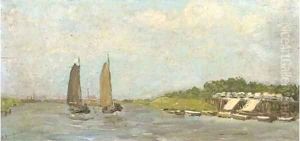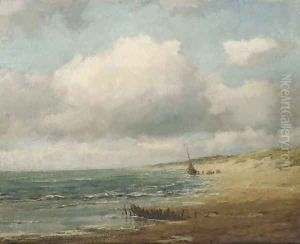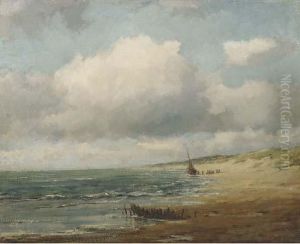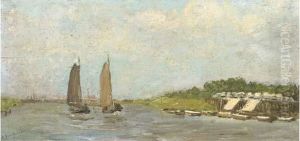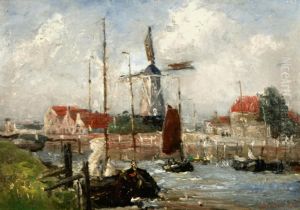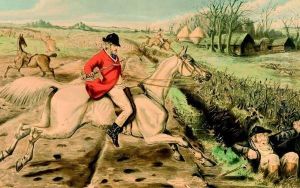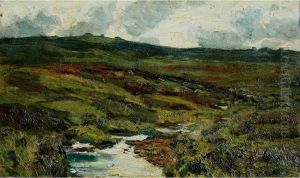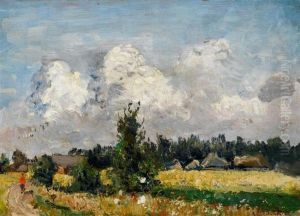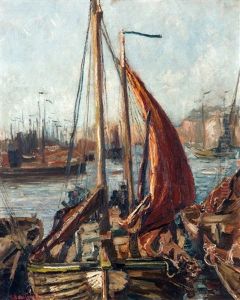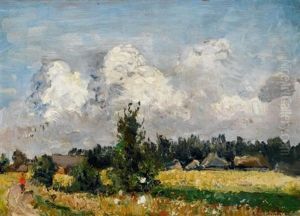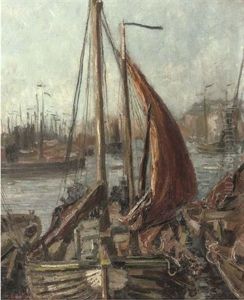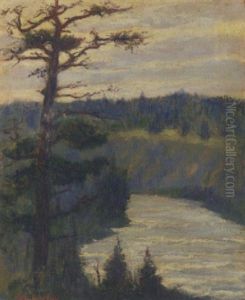Carl August Breitenstein Paintings
Carl August Breitenstein was a 19th-century German artist known for his landscape paintings, particularly of the Rhine region. Born on May 14, 1848, in Bonn, Germany, Breitenstein was part of a period that saw a flourishing of landscape painting, influenced by Romanticism and the subsequent Realist movements.
Breitenstein's early life and artistic training are not extensively documented, but it is known that he was active during a time when artists were increasingly interested in capturing the natural beauty and the atmospheric variations of the outdoors. He would have been a contemporary to the likes of the Hudson River School in America and the Barbizon School in France, both of which championed plein air painting and a focus on light and shadow.
Throughout his career, Breitenstein's work was marked by a dedication to depicting the landscapes around him with fidelity and a sense of immediacy. His paintings often include scenes of the Rhine, featuring the river itself, the surrounding hills, vineyards, and the daily life of the people in the region. The Rhine was a significant subject for many artists of the time, symbolizing both the majesty of nature and the cultural heritage of Germany.
Unfortunately, Carl August Breitenstein did not gain the same level of fame as some of his contemporaries, and as a result, details about his personal life, training, and the breadth of his work remain somewhat obscure. Nevertheless, his contributions to German landscape painting continue to be appreciated by art historians and collectors. The appeal of his work lies in his ability to capture the tranquil and picturesque qualities of the Rhine landscapes, which were undergoing rapid industrialization and change during his lifetime.
Breitenstein died on September 15, 1921, leaving behind a body of work that is admired for its serene beauty and historical value. His paintings serve as a window into the 19th-century Rhine region and reflect the broader European interest in landscape painting during an era of significant cultural and technological transformation.
